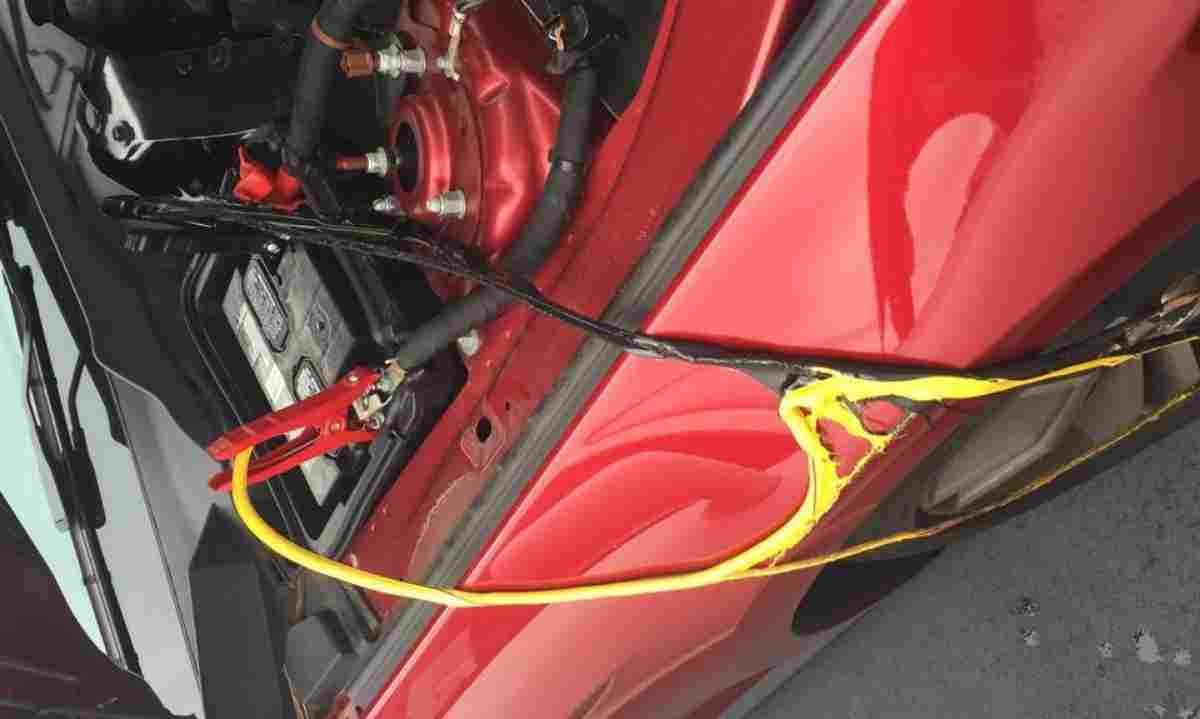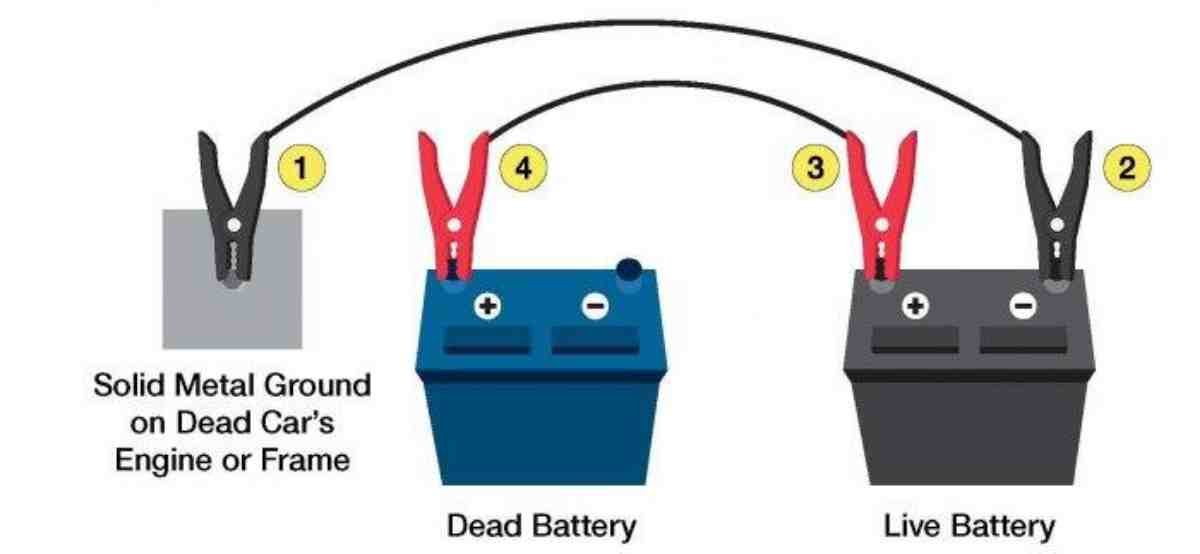6 Reasons for Melted Jumper Cable [How to Fix]
If you have a melted jumper cable problem, this publication gives the needed explanation, and, of course, solution(s).
Melted jumper cable could be due to connecting the jumpers incorrectly, a short in the car, or using cheap jumper leads. Make sure to buy a thick jumper cable to avoid jumper lead melting.
It is one thing to know the steps to jump a dead car battery, even with a faulty alternator. However, doing it wrongly, or missing a significant step can be damaging. Your jumper cables just heated and melted, and this article gives the reasons.

Reasons for Melted Jumper Cable
The reason for your melted jumper cable could be due to any or all of the following:
Crossed jumper cables
Crossing the jumper cables often results in it melting, so avoid this. You should also have in mind that a melt jumper cable can damage the battery or other major components in the car.
Incorrectly connecting the jumper cable typically results in a reversed polarity within a few seconds. This can force current flow in opposite directions through the dead battery, which heats the cables and clamps.
In extreme cases, jumper cable crossing can result in shocks or slight tingles depending on the amount of current flow. If you get a shock, uncross the cables for polarity to get back to normal. Note that the current does not immediately go down to zero.
Read also: fix for battery not charging
Loose connections
If the jumper cables are damaged, they can melt as a result of loose connections at the ends. This typically increases resistance, causing heat build-up as the current flows through them.
Loose connections can also cause short-circuiting, which builds up heat. Unfortunately, this can damage the electrical system of your vehicle. In extreme cases, the battery or jumper cable can become exceedingly hot and causes fire.
You could manually check loose terminal connections by lightly smacking the jumper cable using your hand. If loose, fit it in before connecting the batteries.
Poor material used for jumper cables
If your jumper cables are built with poor materials, expect them to melt. High-quality jumper cables typically use thick insulation such as EPR (Ethylene Propylene Rubber). This is capable of resisting moisture, ozone, weather, mechanical impact, and abrasion.
Cheapies may use aluminum in an attempt to reduce production costs. Unfortunately, this type of jumper cable material is not what you need to ensure safety and avoid melted jumper cables.
Jumper leads also use stranded copper conductors that enhance flexibility and make the cables sturdy for any jumpstarting application.
Cheap jumper cables
Similar to the point above, cheapies will expose you to injury. When buying jumper cables for your car, invest more money for the best value. Cheap jumper cables will arrive thinly, and cannot handle the amps, which results in melting.
Read also: signs that car is out of freon
The thickness of a jumper cable is one of the signs that you do not risk a melting problem, which is not present in cheapies. This does not mean that you should mistake the thickness of all jumper cables for reliability.
A short in the vehicle you want to jump
If the car you want to jumpstart has a flat battery, consider if it has the same voltage as the donor car. Many vehicles are 12V, and typically larger trucks have up to 24V.
Also, if the jumper cables heat, smoke, and melt immediately you make the connections or after you attempt to start the car with a flat battery, wrong connections could be the cause. But do not rule out the possibility of the car you want to jump having a short. In essence, a short can cause your jumper cable to melt, so not just making wrong connections.
Excessive current
We passively mentioned excessive current as a problem earlier on, except we would be emphasizing it again. Again, your jumper cable can melt due to excessive current, typically due to the quality.
A cheap set of jumper cables carries thin wires, and so they have a high resistance, which gets hot when in use. A decent pair of jump leads, however, does the job. Let’s say you use leads rated 200A, a decent alternator can put out 60A, which will not even make it warm.
Jumper cables transfer a large amount of current within a short time. The wire cable has to be able to handle the current, so if it is a light wire, it will melt. Typical commercial sets, for instance, use thicker cable. The battery clamps are also heavy with powerful springs that affect the connection.
Is it safe to use melted jumper cables?
It is not safe to use melted jumper cables. Do have in mind that the most common reason for melted jumper cables is a misaligned connection. If you reserve these, an electrical failure can take place, causing the cables to melt. Some modern vehicles use safety precautions to keep the battery from exploding but fries the jumper cables instead. An older car can experience a battery explosion.
How do you fix or prevent jumper cables from melting?

Since it is not safe to use a melted jumper cable, you want to fix your problem. The fix does not mean you would be repairing the jumper cable. It was not good in the first place anyway.
The common culprit is usually connecting the jumper leads incorrectly. Get a thick replacement jumper cable and do the connection as follows:
First, make sure to turn off the donor car. Connect the red lead on the positive terminal ‘+’ of battery on the donor car to the positive terminal ‘+’ of the car with a dead battery.
Next, connect the black lead on the negative terminal ‘–’ of the donor or working car to the engine block of the car with a dead battery.
Connecting to the engine block minimizes the risk of battery explosion on the car with a dead battery. This is not always the case in modern cars, which is why the jumper cable melts instead.
A discharged car battery may continue to release potentially explosive gasses. When you connect the positive and negative cables to the dead battery, this can cause a spark where the circuit is completed.
You do not want sparks to occur in the explosive environment, so as long as you do everything correctly, start the engine of the working or donor vehicle. Slightly increase the revs and allow up to 5 minutes for the discharged battery to receive some charge.
If you attempt to start the donor car straight away, the car with a flat battery will try to draw lots of electric current through the jump cables, which adds stress to the jumper cables.
If there are sparks after you connect the jumper cables, it is a sign that the car with a dead battery has a short circuit around the wiring. The go-to solution here is a car mechanic – contact one to prevent causing damages to the vehicle’s electrical components or the battery.
Meanwhile, if you have no jumper cables, here is a way you can still start your car without them.
- 10 Common Mistakes When Bleeding Brakes - September 12, 2023
- Dash Cam That Records When Car is Off [5 Best] - September 11, 2023
- How to Know if Dash Cam is Recording [10 Methods] - September 8, 2023




